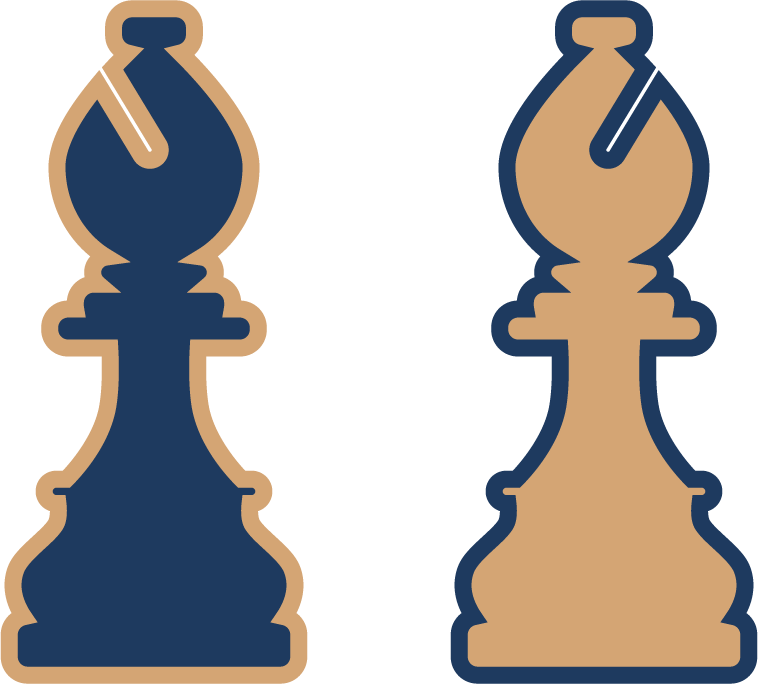Have you ever wondered why some people achieve extraordinary success while others struggle to make progress? The answer often lies in their mindset. Research by Carol Dweck reveals the power of a growth mindset—the belief that abilities can be developed through effort and learning.
Books like “Mindset: The New Psychology of Success” have sold over 25 million copies globally, proving their transformative impact. Hal Elrod’s “The Miracle Morning,” inspired by his near-death experience, introduces the SAVERS routine to kickstart your day. James Clear’s “Atomic Habits,” with 20 million copies sold, provides a practical framework for building lasting habits.
These works, along with timeless classics like Napoleon Hill’s “Think and Grow Rich,” continue to shape leaders and thinkers. By combining modern neuroscience with actionable strategies, they offer more than theory—they provide tools for real change. Ready to unlock your potential? Let’s dive in.
Key Takeaways
- A growth mindset fosters continuous learning and improvement.
- Books like “Mindset” and “Atomic Habits” have influenced millions worldwide.
- Practical routines, such as the SAVERS method, can enhance daily productivity.
- Neuroplasticity supports the idea that the brain can adapt and grow.
- Classic works like “Think and Grow Rich” remain relevant for modern readers.
Introduction to Mindset Transformation
What separates those who thrive from those who stay stuck? It’s often their approach to learning and growth. According to Carol Dweck, a growth mindset is the belief that abilities can be developed through effort and practice. This contrasts with a fixed mindset, where people believe their talents are static and unchangeable.
Tom Ferry, a renowned coach, once said, “All leaders are readers.” This highlights the importance of continuous learning. Books like “Mindset” and “Atomic Habits” have sold millions of copies, proving their impact on personal growth and life transformation.
Neuroplasticity, the brain’s ability to adapt, supports the idea that change is possible. James Clear’s research on habit formation and Brené Brown’s work on vulnerability further emphasize the power of mindset. Mihaly Csikszentmihalyi’s concept of flow state shows how focused effort can lead to optimal experiences.
Reading is not just about consuming information—it’s an active process of transformation. By adopting a growth mindset, you can unlock your potential and achieve extraordinary results.
1. “Mindset: The New Psychology of Success” by Carol Dweck
What if your potential is limitless, and the only thing holding you back is your belief system? Carol Dweck’s groundbreaking book, “Mindset: The New Psychology of Success,” explores this idea in depth. With over 25 million copies sold worldwide, it has become a cornerstone for anyone seeking personal and professional transformation.
Understanding Growth vs. Fixed Mindset
Dweck’s research, spanning two decades at Stanford University, introduces two core mindsets: growth and fixed. A growth mindset is the belief that abilities can be developed through effort and learning. In contrast, a fixed mindset assumes that talents are innate and unchangeable.
This concept has been applied in classrooms, where praising effort over intelligence leads to better student outcomes. It’s also been embraced by corporations like Microsoft and Google, where mindset training has boosted workplace productivity.
How This Book Can Change Your Life
Dweck’s work isn’t just theoretical—it’s practical. For example, Beyonce’s “Sasha Fierce” alter ego is a testament to the power of mindset shifts. By adopting a confident persona, she transformed her performance anxiety into strength.
Dr. Heidi Grant’s research on habit strategies complements Dweck’s findings, offering actionable steps for success. Similarly, plastic surgeon Maxwell Maltz’s case studies on self-image highlight how mindset influences behavior.
To start your journey, consider weekly mindset journaling. Reflect on challenges and how you approached them. This simple practice can help you cultivate a growth mindset and unlock your full potential.
2. “Atomic Habits” by James Clear
Ever felt stuck in a cycle of unproductive routines? Small changes can break the pattern. James Clear’s “Atomic Habits” shows how tiny adjustments can lead to massive results over time. With over 20 million copies sold, this book has become a guide for anyone looking to transform their life through better habits.
The Power of Small Changes
Clear’s philosophy revolves around the idea of getting 1% better every day. This compound effect, when applied consistently, leads to significant improvements. For example, integrating a 7,000-step treadmill habit while watching Netflix can make fitness enjoyable and sustainable.
His 4 Laws of Behavior Change—Make it Obvious, Attractive, Easy, and Satisfying—provide a clear framework. These principles align with BJ Fogg’s research on Tiny Habits, emphasizing simplicity and consistency.
Building Habits That Last
Habit stacking is another powerful technique. By attaching a new habit to an existing one, like meditating after brushing your teeth, you create a seamless routine. Tools like Streaks or Habitica can help track progress and keep you motivated.
Clear’s work complements Hal Elrod’s SAVERS morning routine, showing how small, intentional actions can set the tone for the day. Whether it’s reducing calories or increasing exercise, the key is to start small and stay consistent.
Ready to take action? Try a 30-day atomic habit challenge. Focus on one small change, track your progress, and watch how it transforms your goals and life.
3. “The 7 Habits of Highly Effective People” by Stephen R. Covey
How do some individuals consistently achieve their goals while others fall short? Stephen R. Covey’s “The 7 Habits of Highly Effective People” offers a roadmap to personal professional excellence. Since its publication in 1989, this book has sold over 25 million copies, proving its timeless relevance.
Covey’s principles focus on character ethics over personality ethics. He emphasizes the importance of aligning actions with core values. This approach has influenced leaders, entrepreneurs, and educators for years.
Key Principles for Personal and Professional Success
One of Covey’s foundational concepts is the Circle of Influence vs. Circle of Concern. By focusing on what you can control, you reduce stress and increase productivity. Another key idea is the Q2 Time Management Quadrant, which prioritizes important but not urgent tasks.
Synergy, the third habit, encourages collaboration for greater results. Covey’s “Think Win-Win” strategy has been modernized for negotiation tactics, helping individuals and teams achieve mutual benefits.
Applying Covey’s Habits in Daily Life
Start with “Begin With the End in Mind” by creating a personal mission statement. This exercise helps clarify your long-term vision. For “Sharpen the Saw,” consider a digital detox to recharge mentally and physically.
Weekly integrity challenges can reinforce “Be Proactive” and “Put First Things First.” These practices align with James Clear’s identity-based changes, ensuring habits stick. Whether you’re negotiating a salary or leading a remote team, Covey’s habits offer actionable steps for success.
4. “The Subtle Art of Not Giving a F*ck” by Mark Manson
What if the key to happiness lies in caring less, not more? Mark Manson’s “The Subtle Art of Not Giving a F*ck” challenges traditional self-help norms. With over 15 million copies sold since 2016, this book has redefined how we approach personal growth and life challenges.
Manson introduces the “Inverse Happiness” concept, suggesting that chasing positivity often leads to frustration. Instead, he argues for embracing discomfort and focusing on what truly matters. This idea resonates with modern readers seeking authentic success.
Choosing What Truly Matters
The “Feedback Loop from Hell” is a central theme in Manson’s work. It describes how obsessing over problems amplifies stress. This contrasts with Tim Ferriss’ Fear Setting, which encourages confronting fears directly.
Manson’s “Do Something” principle tackles paralysis by action. Instead of overthinking, he advocates for taking small steps. This aligns with Greg McKeown’s Essentialism, which emphasizes prioritizing what’s truly important.
Embracing Life’s Challenges
Manson’s 3 Life Values framework—Responsibility, Uncertainty, and Failure—provides a roadmap for resilience. He references the Navy SEALs’ 40% Rule, which states that when you feel exhausted, you’ve only used 40% of your potential.
Modernizing Stoic philosophy, Manson teaches that suffering is inevitable but optional. His F*ck Budget worksheet helps readers allocate their energy wisely, focusing on what aligns with their values.
Startup founder burnout case studies illustrate the dangers of misplaced priorities. By linking Manson’s ideas to Carol Dweck’s research on failure, readers learn to embrace setbacks as opportunities for change.
5. “Think and Grow Rich” by Napoleon Hill
What if the secret to success lies in the way you think? Napoleon Hill’s “Think and Grow Rich,” first published in 1937, explores this idea. Over the years, it has become a cornerstone for those seeking financial and personal growth.
Hill’s philosophy revolves around the concept of “thinking substance.” He believed that thoughts can manifest into reality. This idea has influenced countless individuals, including Brian Tracy, who credits Hill’s mentorship for his own achievements.
The Role of Thoughts in Achieving Success
Hill’s 13 Principles, rooted in his research, emphasize the power of the mind. Modern neuroscience supports his ideas, showing how visualization and affirmations can rewire the brain. For example, Earl Nightingale’s “Strangest Secret” builds on Hill’s concept of auto-suggestion.
Master Mind groups, another key principle, have evolved into modern mastermind communities. These groups foster collaboration and accountability, helping individuals achieve their goals.
Practical Steps to Financial Abundance
Hill’s 6 Steps for Wealth include visualization and persistence. Tony Robbins’ RPM system aligns with these steps, offering a structured approach to goal-setting. Shark Tank entrepreneurs often credit Hill’s principles for their success.
Critiques of modern manifestation highlight the importance of action alongside thought. Hill’s DESIRE acronym—Definiteness of Purpose, Enthusiasm, Self-Reliance, Imagination, Resourcefulness, and Execution—provides a roadmap for turning dreams into reality.
By applying these timeless principles, you can unlock your potential and achieve financial abundance.
6. “You Are a Badass” by Jen Sincero
What if the key to unlocking your greatness lies in embracing your true self? Jen Sincero’s “You Are a Badass” offers a refreshing, humor-driven take on self-help. Published in 2013, this book combines practical advice with a touch of spirituality, making it a favorite for those seeking personal growth.
Embracing Your Inner Badass
Sincero’s approach is both relatable and empowering. She encourages readers to ditch self-doubt and step into their full potential. The “Money Love” chapter, for example, provides exercises to shift your mindset around wealth. It’s a blend of woo-woo and practical strategies, making it accessible to skeptics and believers alike.
Her “Bat Signal” concept teaches you to recognize opportunities. By staying open and aware, you can spot chances that align with your goals. This idea complements Tim Ferriss’ Fear-Setting, helping you take bold steps without overthinking.
Manifesting Your Desires
Sincero’s “Act As If” technique is a game-changer. By roleplaying the person you want to become, you can rewire your brain for success. This aligns with Neville Goddard’s teachings on mental visualization, updated for modern readers.
To put these ideas into action, try the 30-Day Badass Challenge. Focus on one small change daily, like practicing gratitude or setting boundaries. Over time, these habits can transform your life in meaningful ways.
Case studies of career transitions highlight the power of authenticity, linking to Brené Brown’s research. Whether you’re chasing a dream job or building confidence, Sincero’s advice offers a clear way forward. Her work reminds us that greatness isn’t about perfection—it’s about embracing who you are and taking bold steps toward the things that matter most.
7. “The Power of Now” by Eckhart Tolle
How often do you find yourself dwelling on the past or worrying about the future? Eckhart Tolle’s 1997 spiritual classic, “The Power of Now,” offers a profound solution: living fully in the present moment. This book, selected for Oprah’s Book Club, has inspired millions to find peace and clarity in their life.
Living in the Present Moment
Tolle introduces the concept of “Psychological Time,” which contrasts with clock time. While clock time is linear, psychological time keeps us trapped in regrets or anxieties. David Allen’s GTD system emphasizes productivity, but Tolle’s approach focuses on mindfulness and presence.
One of his key practices is “Watching the Thinker,” a meditation technique that helps you observe your thoughts without judgment. This simple exercise can reduce stress and bring clarity to your mind.
Finding Peace and Clarity
For busy professionals, Tolle suggests the 5-Minute Now Breaks technique. Pause throughout the day to focus on your breath and reconnect with the present. Apps like Sam Harris’ mindfulness app can support this practice.
Tolle’s “Pain-body” concept explains how emotional pain accumulates and affects our behavior. By recognizing and releasing this pain, you can achieve a state of inner peace. This idea aligns with Mihaly Csikszentmihalyi’s research on flow, where focus leads to optimal experiences.
For those dealing with anxiety, the Anxiety Time-Out Protocol is a practical tool. Step away from stressful situations, breathe deeply, and return with a calmer mindset. CEOs and leaders have successfully used these strategies to manage stress and improve decision-making.
Tolle’s teachings resonate with Michael Singer’s “Untethered Soul,” which also emphasizes letting go of mental clutter. By focusing on the present, you can transform your life and achieve a deeper sense of fulfillment.
8. “Daring Greatly” by Brené Brown
Why do some people thrive in relationships while others struggle to connect? Brené Brown’s “Daring Greatly” answers this question by exploring the transformative power of vulnerability. Based on 12 years of research, this book has reshaped how we think about courage, shame, and authentic connections.
The Power of Vulnerability
Brown’s work introduces the “Vulnerability Armory,” a concept that explains how we shield ourselves from emotional exposure. Unlike Mark Manson’s selective caring, Brown argues that embracing vulnerability is the way to build deeper relationships. Her TED Talk, with over 20 million views, highlights the universal need for this approach.
Shame resilience theory is another cornerstone of her research. By understanding shame triggers, we can develop strategies to overcome them. This aligns with Carol Dweck’s “Not Yet” grading, which emphasizes progress over perfection.
Building Authentic Connections
Brown’s “Engaged Feedback” framework fosters open communication in both personal and professional settings. Google’s psychological safety research supports this, showing that teams thrive when members feel safe to express themselves.
For parents, the Wholehearted Parenting guide offers practical tools to raise resilient children. It’s a modern take on leadership training, emphasizing empathy and authenticity. Fortune 500 companies have adopted these ideas to create healthier workplace cultures.
To apply these principles, try the Vulnerability Audit Worksheet. It helps identify areas where you can embrace vulnerability more fully. By doing so, you can rewire your brain to see vulnerability as a strength, not a weakness.
Brown’s work contrasts with Radical Candor’s directness, showing that empathy and courage can coexist. Whether you’re leading a team or navigating personal relationships, “Daring Greatly” offers actionable steps to connect more deeply with others.
9. “The Four Agreements” by Don Miguel Ruiz
What if the key to a fulfilling life lies in four simple principles? Don Miguel Ruiz’s “The Four Agreements” distills ancient Toltec wisdom into a concise, 153-page guide. Updated in 2011, this book offers timeless teachings for navigating the modern world.
Ancient Wisdom for Modern Life
Ruiz introduces the concept of “Domestication,” where societal norms shape our beliefs. In today’s digital age, media often plays this role, influencing how we see ourselves and others. This idea aligns with cognitive behavioral therapy, which focuses on reshaping thought patterns.
The first agreement, “Be Impeccable with Your Word,” emphasizes the power of communication. In an era of tweets and texts, this principle reminds us to choose our words carefully. Contrast this with the second agreement, “Don’t Take Anything Personally,” which is especially relevant in the age of social media criticism.
Transforming Your Beliefs
The third agreement, “Don’t Make Assumptions,” encourages clarity in relationships. This ties into Mark Manson’s values hierarchy, where honesty and authenticity are prioritized. The fourth agreement, “Always Do Your Best,” has been modernized to address burnout. It’s not about perfection but consistent effort.
To apply these principles, try Agreement Journaling. Reflect on how each agreement shows up in your daily life. Another powerful tool is the Toltec Mirror Exercise, which helps you see yourself without judgment.
Influencer mental health cases highlight the importance of these teachings. By comparing “The Four Agreements” with “The Fifth Agreement,” readers gain a deeper understanding of personal and collective transformation. These principles, rooted in ancient wisdom, offer a roadmap for personal growth in today’s fast-paced world.
10. “Awaken the Giant Within” by Tony Robbins
What if the power to transform your life lies within your ability to take control of your thoughts and actions? Tony Robbins’ “Awaken the Giant Within” is a 785-page guide that empowers readers to unlock their full potential through actionable strategies. Updated in 2007, this book integrates NLP techniques and offers a roadmap for personal and professional success.
Taking Control of Your Life
Robbins introduces the “Triad” concept, which focuses on physiology, focus, and language. By adjusting these three elements, you can create lasting change in your behavior. For example, altering your posture or breathing can instantly shift your mood and energy levels.
His “Leverage” theory contrasts with traditional habit formation. Instead of relying on willpower, Robbins emphasizes creating emotional reasons to act. This aligns with James Clear’s habit stacking, where small actions lead to significant results over time.
Strategies for Personal Transformation
The 90-Day Challenge framework provides a structured approach to achieving your goals. By breaking down objectives into manageable steps, you can maintain momentum and track progress. This method has been used successfully in weight loss transformations, proving its effectiveness.
Robbins’ “Incantations” go beyond affirmations by combining words, emotions, and physical movement. This technique rewires your brain for confidence and resilience. The firewalk experience, a hallmark of his seminars, demonstrates the power of mindset in overcoming fear.
Modernizing the “CANI” (Constant Improvement) principle, Robbins encourages small, consistent upgrades in all areas of life. His Decision-Making Matrix helps clarify priorities, ensuring you focus on what truly matters. By comparing “Awaken the Giant Within” with his earlier work, “Unlimited Power,” readers gain a deeper understanding of his evolving philosophy.
Ready to take the first step? Start with the 90-Day Challenge and watch how these strategies transform your life.
11. “The Miracle Morning” by Hal Elrod
How can a simple morning routine transform your entire day? Hal Elrod’s “The Miracle Morning” offers a powerful answer. Inspired by his near-death experience, Elrod developed the SAVERS routine to help people start their day with purpose and focus.
The SAVERS routine stands for Silence, Affirmations, Visualization, Exercise, Reading, and Scribing. Each component takes just six minutes, making it easy to integrate into your daily life. This method has been praised for its simplicity and effectiveness in fostering personal growth.
Starting Your Day with Purpose
Elrod’s approach contrasts with traditional productivity methods. While the 5AM Club emphasizes early rising, “The Miracle Morning” focuses on intentional actions. This aligns with BJ Fogg’s research on motivation waves, showing how small, consistent steps lead to lasting change.
For those with hybrid work schedules, the Digital Detox Morning Protocol can enhance focus. By limiting screen time in the morning, you create a distraction-free environment. This practice complements James Clear’s environment design principles in “Atomic Habits.”
The SAVERS Routine
Silence, the first component, involves meditation or deep breathing. Affirmations help reprogram your mindset for success. Visualization allows you to mentally rehearse your goals, while exercise boosts energy levels.
Reading and scribing, the final two components, encourage continuous learning and reflection. Entrepreneurs like Tim Ferriss have adopted similar routines to maximize their productivity. The 30-Day Miracle Challenge is a practical way to test the SAVERS routine and see its impact on your time management.
By comparing “The Miracle Morning” with Cal Newport’s “Deep Work,” readers can see how structured mornings lead to optimal performance. Whether you’re a night owl or an early riser, this routine offers a flexible approach to starting your day with intention.
12. “Flow: The Psychology of Optimal Experience” by Mihaly Csikszentmihalyi
What if the secret to peak performance lies in a state of complete focus? Mihaly Csikszentmihalyi’s groundbreaking work, “Flow: The Psychology of Optimal Experience,” explores this idea. Published in 1990, this book has become a cornerstone for understanding how to achieve deep engagement and joy in your work.
Csikszentmihalyi identifies eight conditions for entering the flow state. These include clear goals, immediate feedback, and a balance between skill and challenge. When these elements align, you experience a sense of effortless focus and fulfillment.
Finding Joy in Your Work
The concept of the “Autotelic Personality” is central to Csikszentmihalyi’s research. These individuals naturally seek out challenges and find intrinsic motivation in their tasks. Unlike dopamine-driven productivity, which relies on external rewards, flow is about enjoying the process itself.
For knowledge workers today, this idea is especially relevant. Tasks like coding or writing can become deeply satisfying when approached with the right mindset. The Flow Triggers Checklist can help you identify activities that naturally draw you into this state.
Accessing the Flow State
Csikszentmihalyi’s skill/challenge balance model shows that flow occurs when your abilities match the task’s difficulty. Too easy, and you’re bored; too hard, and you’re anxious. By adjusting the complexity of your work, you can create more opportunities for flow.
Software developers often experience flow while debugging or designing systems. Case studies show that teams who regularly enter this state produce higher-quality work. Tools like the Flow Journal Template can help you track and optimize these moments.
Cal Newport’s “Deep Work” complements Csikszentmihalyi’s ideas, emphasizing the importance of uninterrupted focus. By combining these principles, you can transform ordinary tasks into extraordinary experiences. Whether you’re coding, writing, or problem-solving, the flow state is within reach.
Conclusion
What if the key to unlocking your full potential lies in the habits and routines you build daily? From Carol Dweck’s research on growth mindset to James Clear’s actionable strategies in “Atomic Habits,” these works emphasize the power of small, consistent changes. Neuroplasticity proves that our brains can adapt, making transformation possible at any stage of life.
Contrasting Dweck’s focus on effort with Mark Manson’s embrace of discomfort, these approaches offer diverse paths to personal growth. Morning routines, like Hal Elrod’s SAVERS method, provide a structured way to start your day with purpose. With over 25 million copies sold, these books validate their impact on achieving success.
Ready to take the next step? Start with a mindset journal. Reflect on your challenges and progress daily. This simple practice can help you build habits that lead to lasting change. Your journey to growth begins with one small action today.
FAQ
What is the main idea behind Carol Dweck’s "Mindset: The New Psychology of Success"?
Carol Dweck explores the concept of growth versus fixed mindset, emphasizing how adopting a growth mindset can lead to greater success and fulfillment in life.
How can "Atomic Habits" by James Clear help me improve my life?
James Clear explains how small, consistent changes can lead to significant improvements over time, helping you build habits that stick and transform your daily routine.
What are the key principles in "The 7 Habits of Highly Effective People" by Stephen R. Covey?
Covey outlines seven habits that focus on personal and professional effectiveness, such as being proactive, beginning with the end in mind, and seeking win-win solutions.
What is the central message of "The Subtle Art of Not Giving a F*ck" by Mark Manson?
Mark Manson encourages readers to focus on what truly matters, embrace life’s challenges, and let go of unnecessary distractions to live a more meaningful life.
How does "Think and Grow Rich" by Napoleon Hill guide readers toward success?
Napoleon Hill emphasizes the power of thoughts and provides practical steps to achieve financial abundance and personal success through disciplined thinking and action.
What can I learn from "You Are a Badass" by Jen Sincero?
Jen Sincero inspires readers to embrace their inner strength, overcome self-doubt, and take actionable steps to manifest their desires and live boldly.
What is the core philosophy of "The Power of Now" by Eckhart Tolle?
Eckhart Tolle teaches the importance of living in the present moment, letting go of past regrets and future anxieties to find peace and clarity in daily life.
How does "Daring Greatly" by Brené Brown address vulnerability?
Brené Brown explores the power of vulnerability, showing how embracing it can lead to deeper connections, courage, and authenticity in relationships and life.
What are the four agreements in Don Miguel Ruiz’s book?
The four agreements are: be impeccable with your word, don’t take anything personally, don’t make assumptions, and always do your best. These principles aim to transform beliefs and improve life.
What strategies does Tony Robbins offer in "Awaken the Giant Within"?
Tony Robbins provides actionable strategies for taking control of your life, overcoming limitations, and achieving personal transformation through mindset and behavior changes.
What is the SAVERS routine in "The Miracle Morning" by Hal Elrod?
The SAVERS routine includes Silence, Affirmations, Visualization, Exercise, Reading, and Scribing, designed to help you start your day with purpose and focus.
How does "Flow: The Psychology of Optimal Experience" by Mihaly Csikszentmihalyi help improve happiness?
Mihaly Csikszentmihalyi explains how achieving a state of flow—where you are fully immersed in an activity—can lead to greater joy, productivity, and fulfillment in life.






